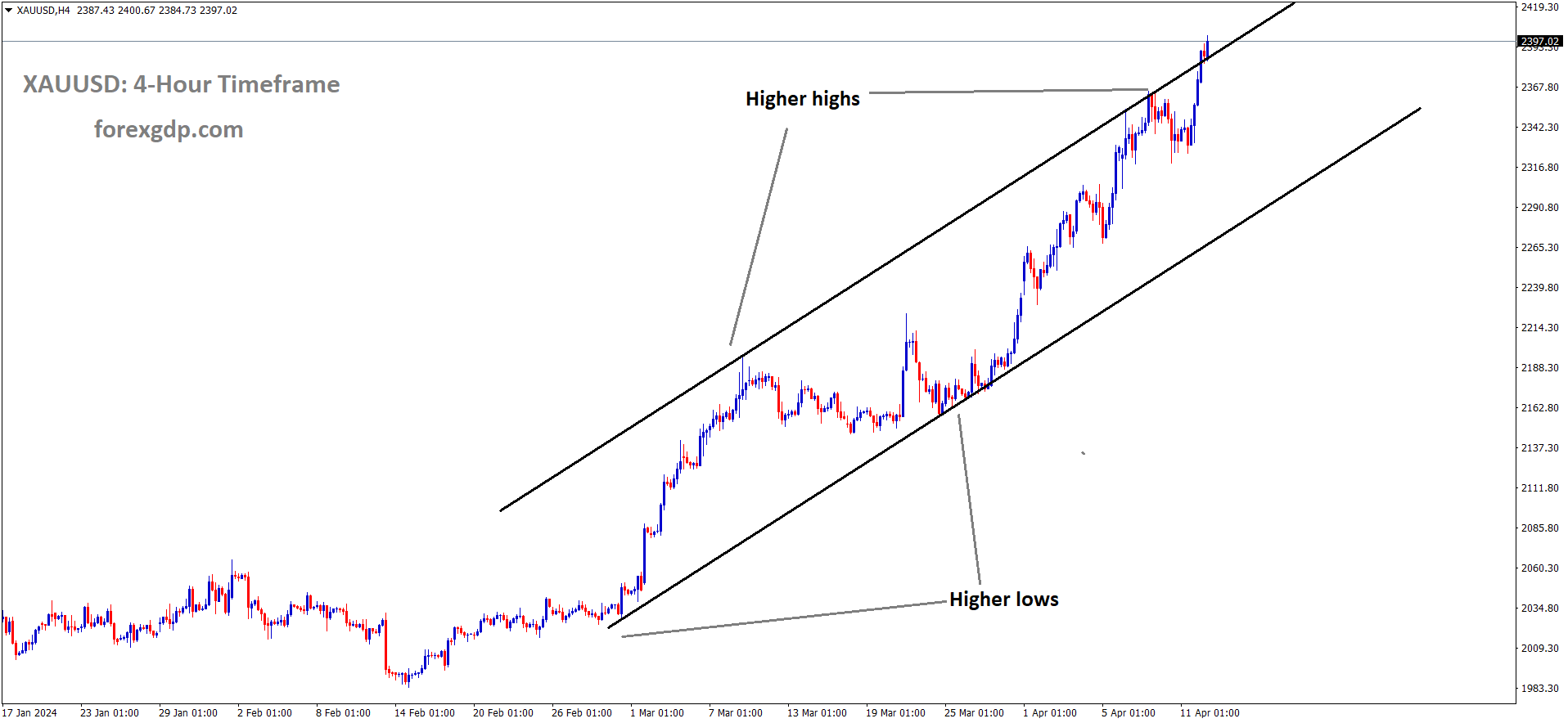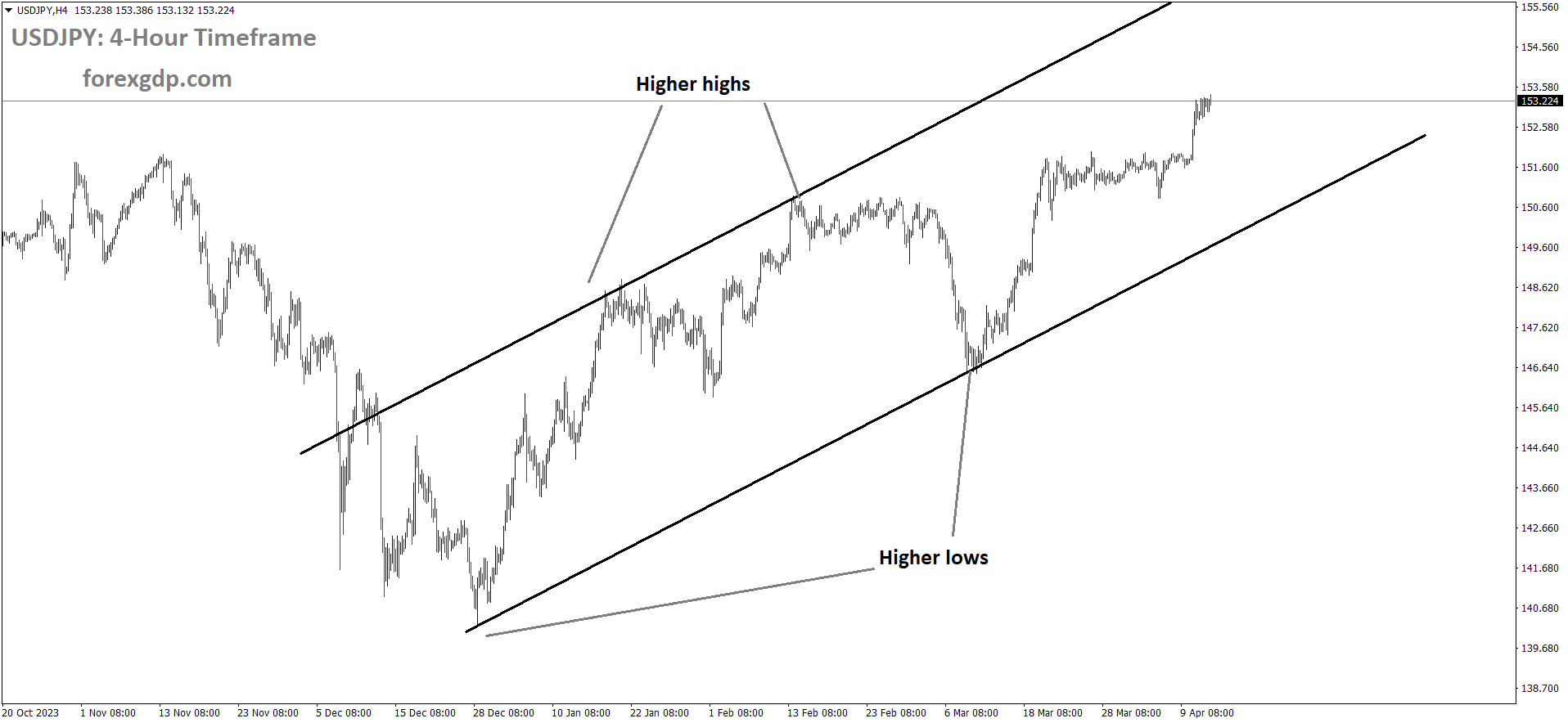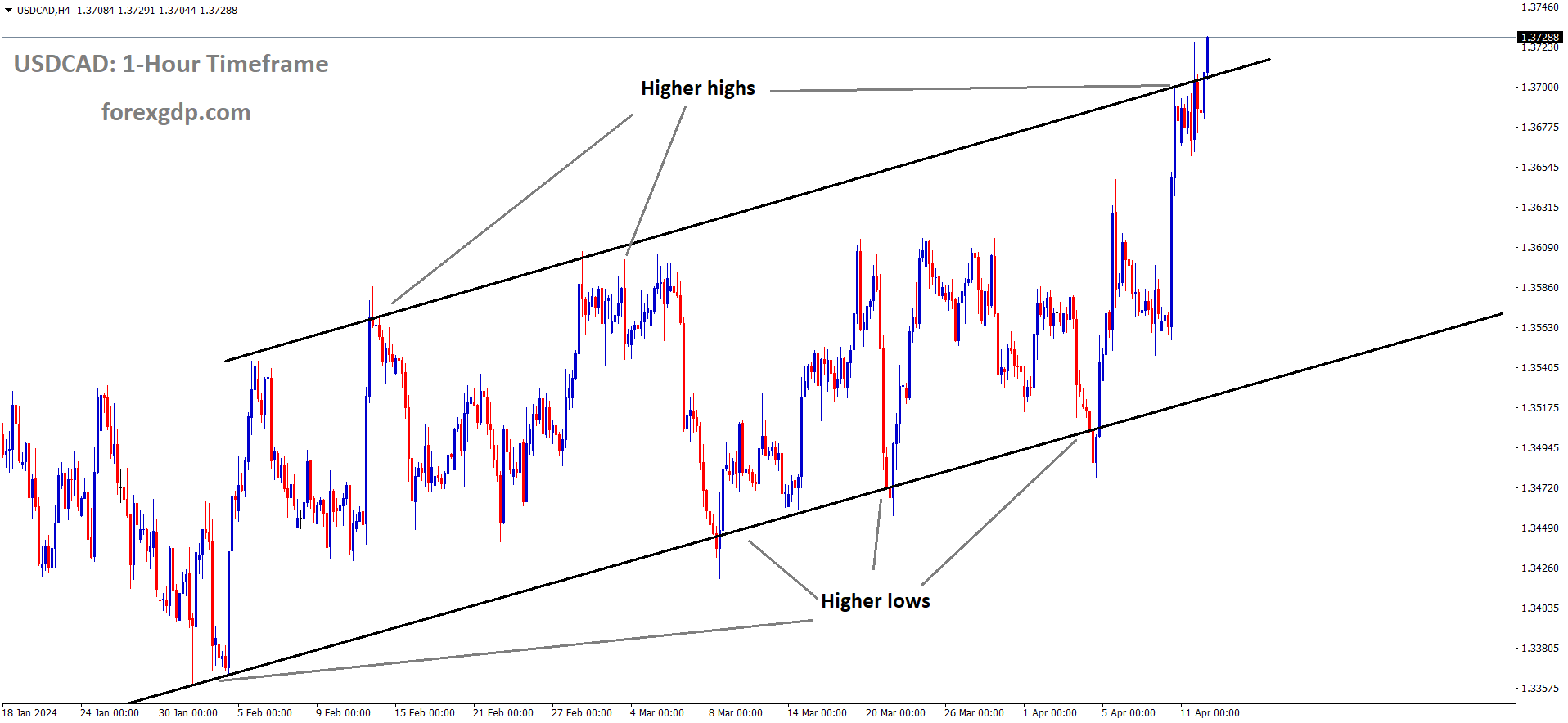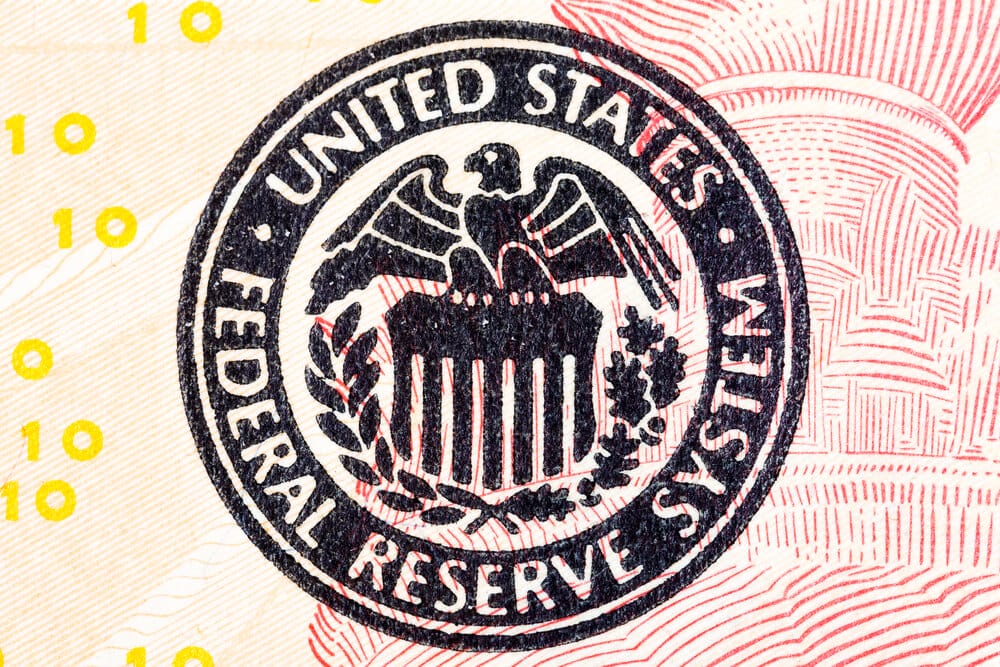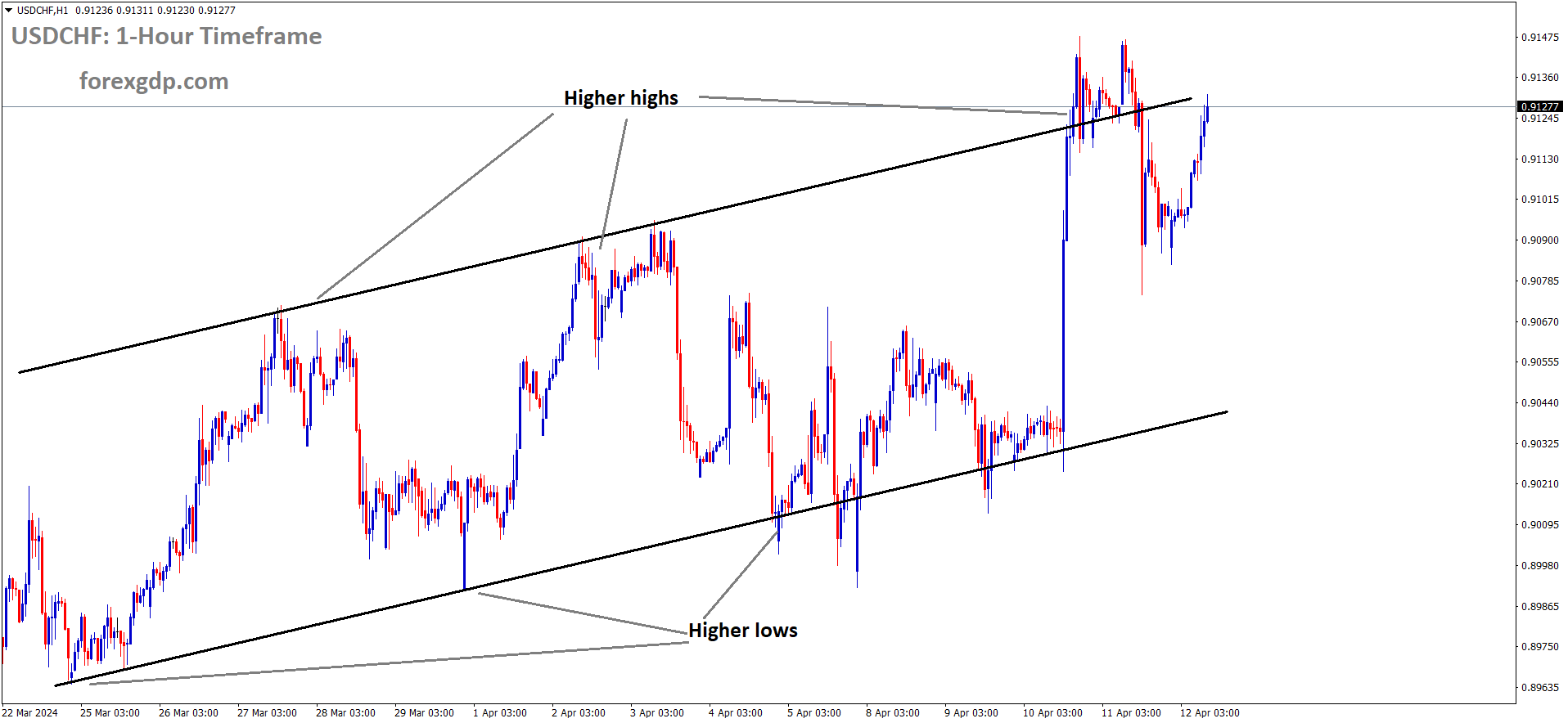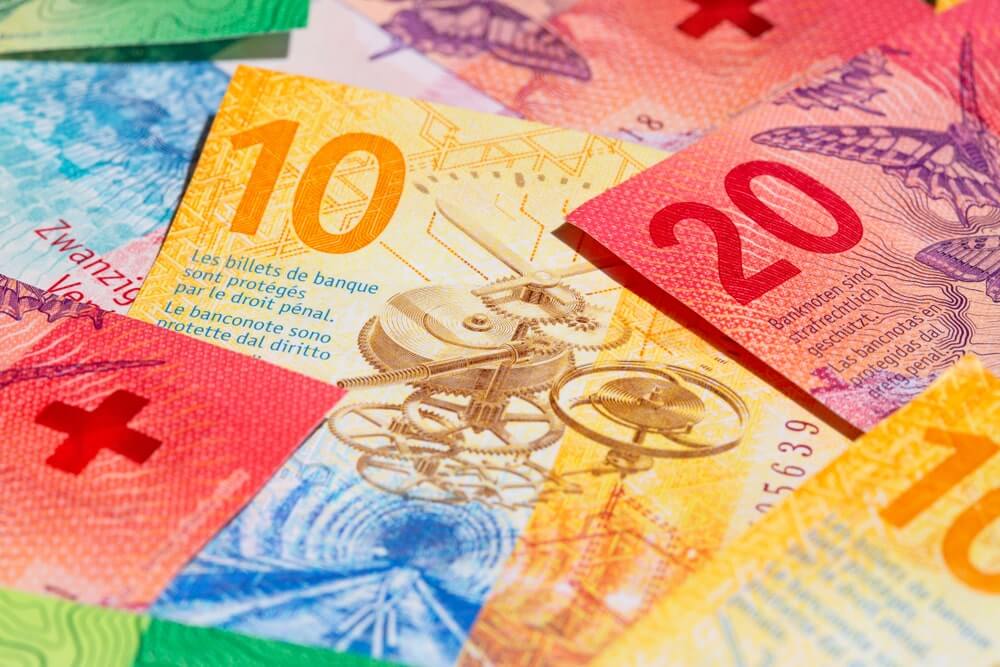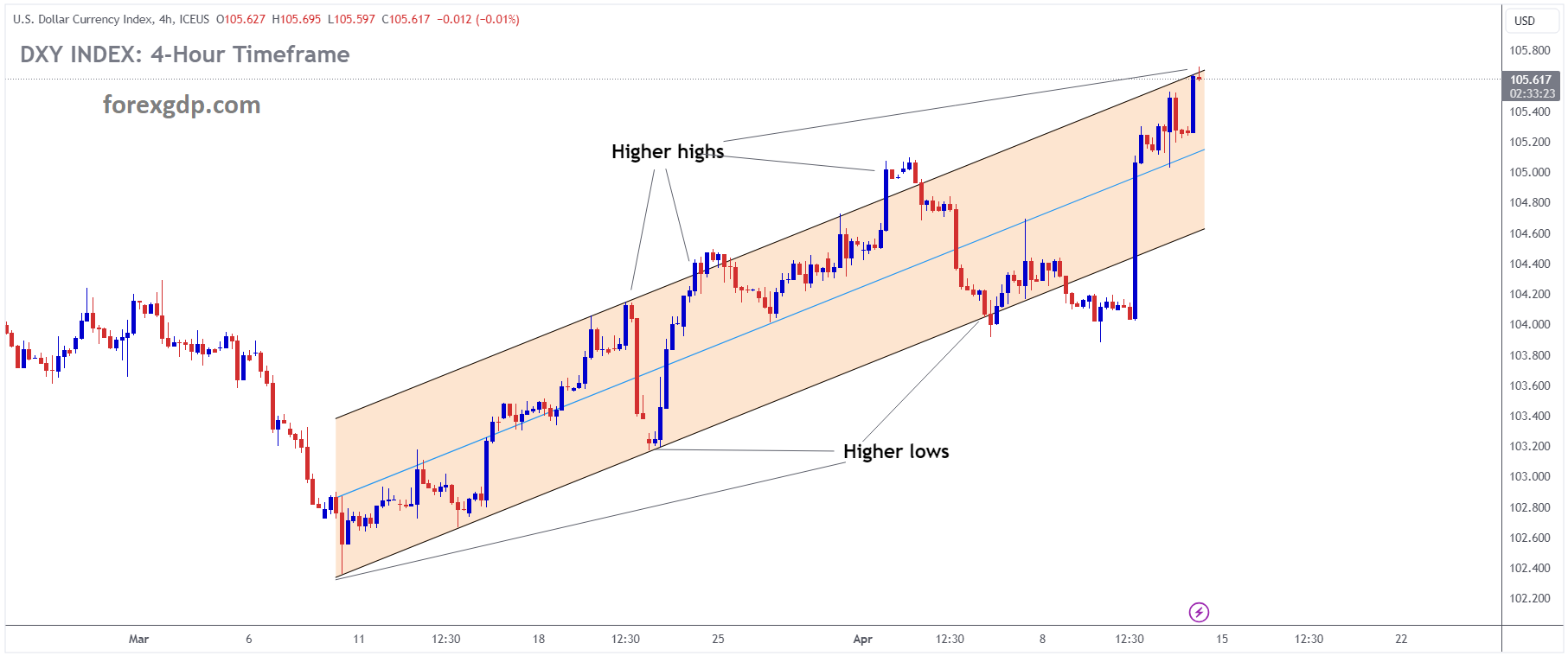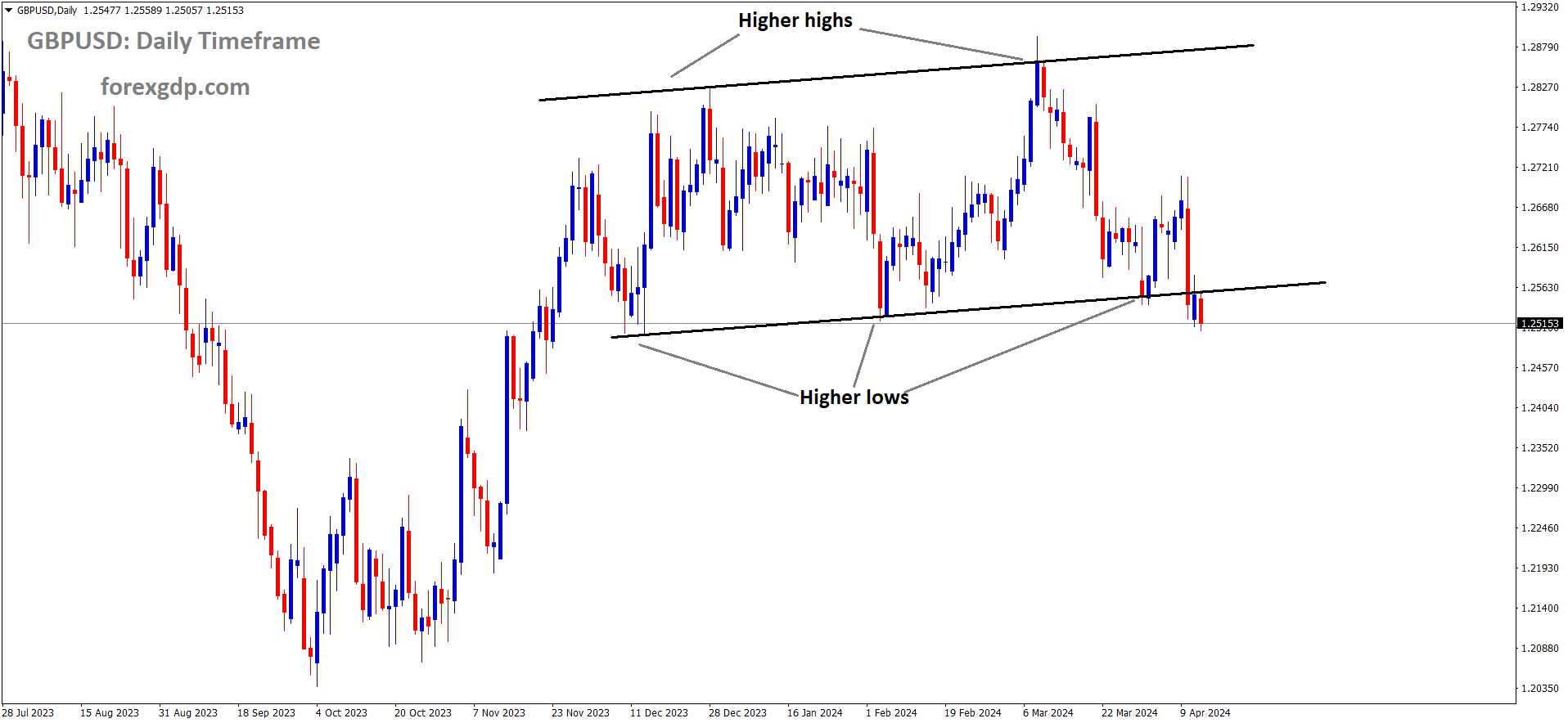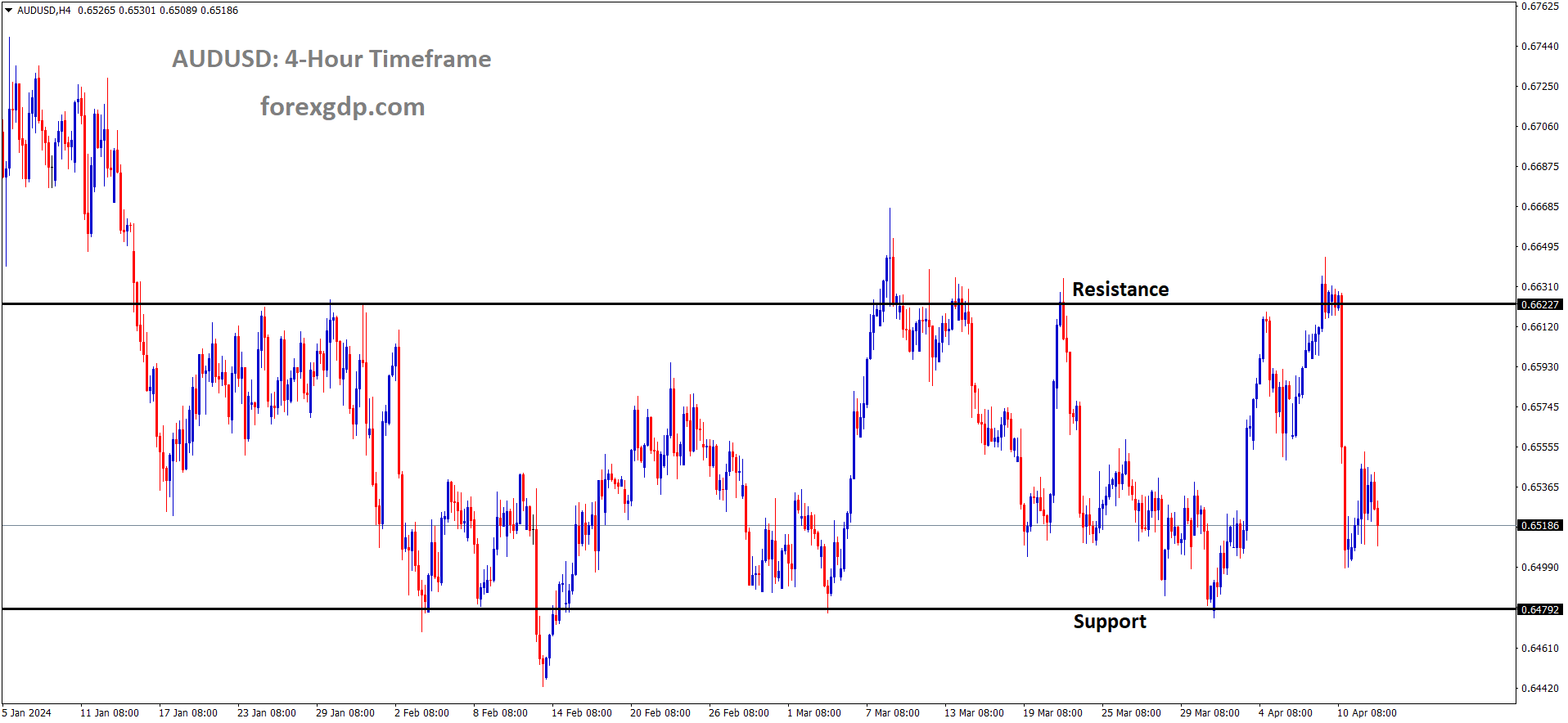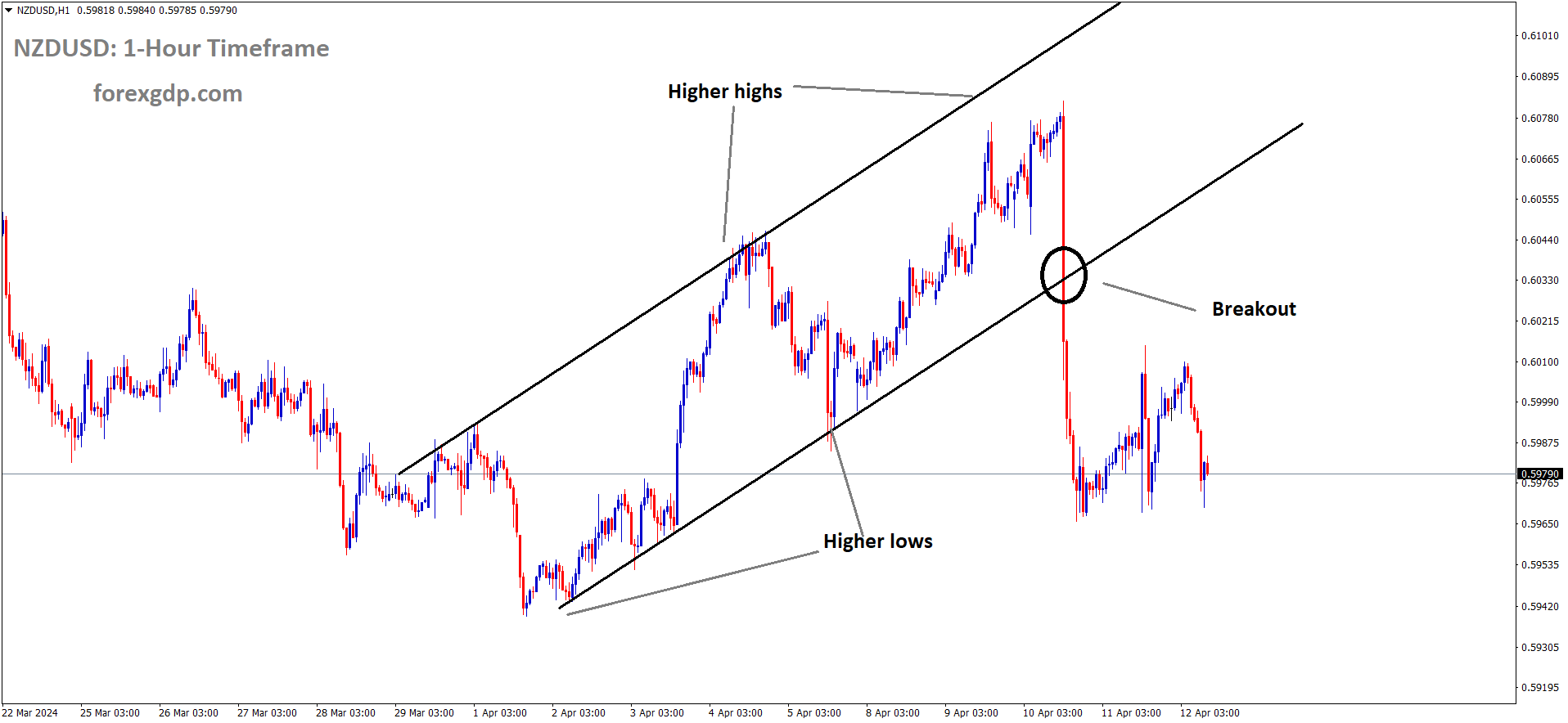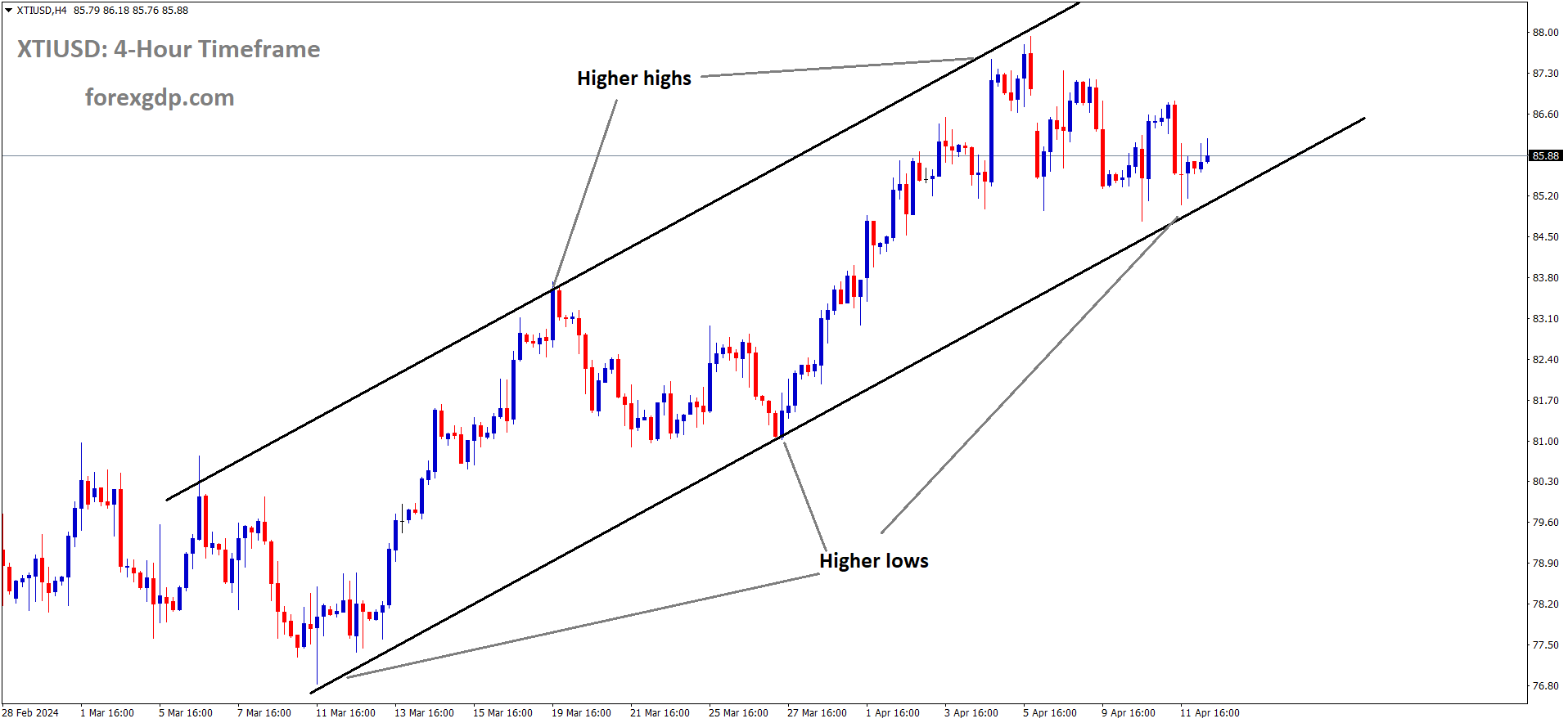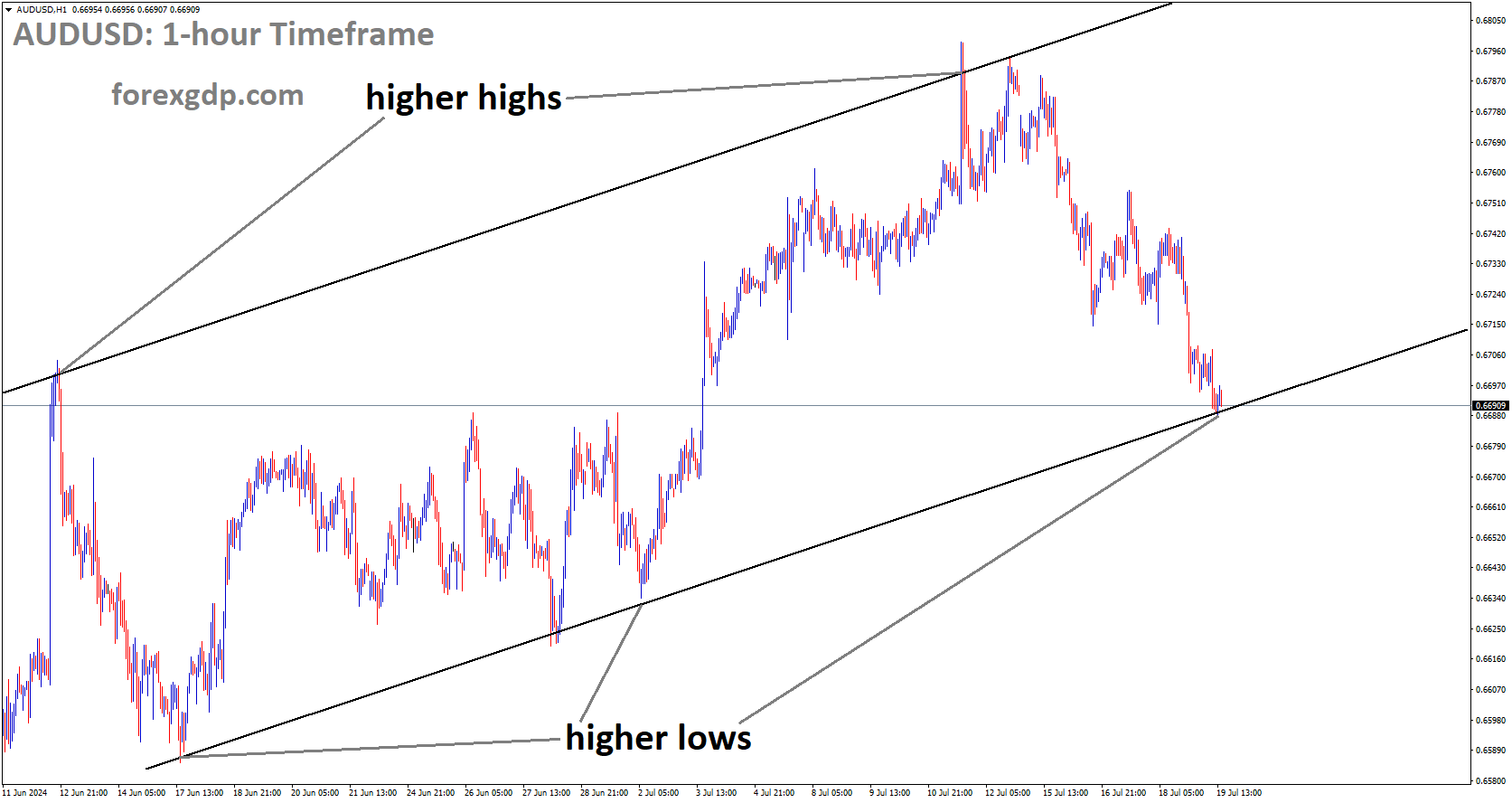XAUUSD Gold price is moving in an Ascending channel and the market has reached higher high area of the channel
XAUUSD – Gold Price Continues Uninterrupted Uptrend, Hits New Record High
The Gold prices are elevated to record high after the Iran said retaliation of Iran embassy attack in Syria will be there, this news created fears in the market and moved Gold prices up against USD. US PPI Data came at lower than expected last day moved USD down against Gold.
Geopolitical tensions persist in the Middle East, providing ongoing support to the safe-haven gold market. This environment is further reinforced by expectations of interest rate cuts by major central banks, contributing to the appeal of the non-yielding precious metal.
Despite robust US dollar buying, fueled by anticipation of the Federal Reserve maintaining higher interest rates for an extended period, gold bulls remain resolute. Even positive sentiment in equity markets fails to deter the upward trajectory of the XAU/USD pair, indicating a prevailing bullish sentiment. However, the potential for overbought conditions may limit further gains.
In recent developments, escalating tensions in the Middle East, particularly following a suspected Israeli strike on Iran’s embassy in Syria, have propelled gold to a new all-time high. Furthermore, the US Producer Price Index figures, which came in below expectations, reinforce hopes for a forthcoming interest rate cut by the Federal Reserve, providing additional impetus to XAU/USD.
Traders, as indicated by the CME Group’s FedWatch tool, perceive a likelihood of the Fed delaying rate cuts until the September policy meeting, with expectations of fewer than two rate reductions this year. Comments from New York Fed President John Williams suggest that while inflation setbacks are acknowledged, immediate policy changes are not warranted. Meanwhile, Richmond Fed President Thomas Barkin indicates that the central bank remains unsatisfied with current inflation levels, emphasizing the need for a cautious approach.
Despite elevated US Treasury bond yields and a strong US dollar performance, the bullish sentiment surrounding XAU/USD remains resilient, underscoring prevailing market dynamics.
EURUSD – Stournaras Supports Divergence from Fed’s Policies
The ECB Governing council member Yannis Stournaras said he supports for divergence of policies from FED and ECB has plan to do four rate cuts in 2024, inflation will come to 2% target is possible in few months as we expected. Euro currency plunged after the ECB member Dovish Speech.
EURUSD is moving in the Descending triangle pattern and the market has reached the support area of the pattern
Yannis Stournaras, a member of the European Central Bank’s Governing Council, expressed his stance on Friday, advocating for a departure from the policies of the Federal Reserve. Stournaras emphasized that the European Central Bank’s monetary approach is excessively prudent, warning that this cautiousness could potentially result in inflation falling below the targeted 2%. In his recommendations, the policymaker proposed implementing four rate cuts throughout the year 2024.
USDJPY – PM Kishida of Japan Holds Talks on Supply Chains, Diplomacy, and Security with Biden
The Japan PM Fumio Kishida said they are discussed with US for Supply chain developments, Safety related measures and business growth developments. Both countries have to promote the investments for economy growth for both countries. We did not decide the trilateral meeting to schedule regularly on every year or not.
USDJPY is moving in an Ascending channel and the market has reached higher high area of the channel
During a summit with US and Filipino leaders, Japanese Prime Minister Fumio Kishida emphasized the importance of bolstering supply chains, addressing diplomatic matters, and enhancing security issues. Kishida highlighted the significance of these discussions, emphasizing their role in fostering regional stability and cooperation.
Furthermore, Kishida mentioned that while there hasn’t been a definitive decision on whether to hold trilateral summits regularly, there’s mutual agreement on the importance of such meetings.
In addition, Kishida underscored the shared perspective between himself and US President Biden regarding the vital role of promoting investment in both nations. Recognizing the interdependence of their economies, they emphasized the need to collaborate closely to lead the global economy effectively.
USDCAD – Range-Bound Below 1.3700, Bullish Outlook Holds
The Canadian Dollar moved flat after the Oil prices moving flat ahead of Iran attack on Israel is expected due to April 01 Iran embassy attacked by Israel.The Bank of Canada hold the rates at this week and employment change came at lower than expected makes Canadian Dollar moved lower against counter pairs.
USDCAD is moving in an Ascending channel and the market has reached higher high area of the channel
During the Asian session on Friday, the USD/CAD pair remained confined within a narrow trading range, exhibiting signs of a pause following a late pullback from its recent peak, the highest level observed since November 22.
The ongoing tension in the Middle East, particularly concerning a potential retaliatory action by Iran following a suspected Israeli strike on its embassy in Syria, has bolstered crude oil prices. This geopolitical concern has strengthened the commodity-linked Canadian Dollar (CAD), acting as a deterrent for the USD/CAD pair. However, the apprehension surrounding the escalating non-OPEC output, primarily driven by the United States, may limit gains in oil prices. Moreover, market expectations of a delay in interest rate cuts by the Federal Reserve (Fed) have favored the USD bulls, providing a buffer against potential downside pressure on the currency pair.
Following the release of higher-than-expected US consumer inflation figures earlier in the week, investor sentiment regarding the timing of the Fed’s rate cut has shifted. This adjustment in expectations, pushing back the anticipated rate cut to September from June, has bolstered US Treasury bond yields and upheld the strength of the USD, consolidating near its recent peak levels. Technically, the breakout above the 1.3600-1.3610 resistance zone and subsequent upward movement suggest a bullish bias for spot prices.
Market participants will closely monitor the release of the Preliminary Michigan Consumer Sentiment Index during the North American session, along with speeches by FOMC members, which are expected to influence USD demand. Combined with developments in oil prices, these factors are likely to create short-term trading opportunities around the USD/CAD pair, which appears poised to record gains for the second consecutive week.
USDCHF – Global watchdog backs reform proposals for Swiss banking
The Financial Stability Board appreciated for Swiss Government taking “Too Big to Fail” concept for regulating Swiss banks inorder to save from crisis like Credit Suisse bank happened in the last year. SNB also welcomed this process of safety regulations and to implement the banks with hard way inorder to save from Crisis time.
USDCHF is moving in an Ascending channel and the market has reached higher high area of the channel
The Financial Stability Board (FSB) expressed its approval of Swiss initiatives aimed at enhancing the regulation of the banking sector and fortifying its stability. FSB Secretary General John Schindler commended the Swiss government’s measures to reinforce the “Too Big to Fail” (TBTF) framework, particularly in light of recent upheavals, emphasizing the significance of these changes, especially considering the scale of the UBS bank. Schindler noted that several of the proposed reforms aligned with recommendations from a recent peer review conducted by the FSB, suggesting that their adoption would bolster the resilience of the banking framework.
Switzerland announced stricter capital requirements for UBS and three other systemically relevant banks to mitigate risks and prevent a recurrence of events similar to the collapse of Credit Suisse. The FSB has urged Switzerland to enhance banking regulations, underscoring the potential threats posed by a UBS failure to the country’s financial stability. The watchdog emphasized the need for additional resources, tools, and early intervention capabilities for the financial market regulator FINMA, along with measures to enhance liquidity support for banks. Schindler stressed the importance of these measures, particularly following the creation of a globally systemically important bank, UBS, whose balance sheet now surpasses twice the size of Switzerland’s entire economy.
Meanwhile, the Swiss National Bank (SNB) acknowledged the Swiss government’s review of TBTF regulations and welcomed the ongoing assessment of TBTF supervision for the financial sector.
USD INDEX – IMF Managing Director: Fed Can Cut Rates by End of 2024
The IMF MD Kristalina Georgieva said FED is able to cut the rates by end of 2024, it is purely basedon inflation reading in the US economy. We did not judge before when did Fed rate cuts is happened, it is purely based on Data of US economy.
USD Index is moving in an Ascending channel and the market has reached higher high area of the channel
Kristalina Georgieva, the managing director of the International Monetary Fund (IMF), expressed the view that the Federal Reserve (Fed) should be capable of commencing interest rate cuts by the conclusion of 2024.
Georgieva emphasized, “We remain on our projection that we would see, by the end of the year, the Fed being in a position to take some action in a direction of bringing interest rates down.” However, she cautioned against haste, advising that decisions should be based on data-driven indications.
She remarked on the trajectory of inflation, noting, “Inflation is going down.” Despite this trend, she highlighted that it has not yet reached the desired level, stating, “But, it is not yet where we want it to be.”
GBPUSD – UK GDP Up 0.1% MoM in February, Meeting Expectations
The UK GDP came at 0.10% MoM in February month versus 0.30% printed in January month.Industrial and Manufacturing production came at 1.1% and 1.2% respectively.UK TradeBalance came at GBP -14.212 Billion versus -GBP14.097 Billion previous reading and GBP -14.50 Billion is expected.
GBPUSD is moving in an Ascending channel and the market has reached the higher low area of the channel
According to the latest report released by the Office for National Statistics (ONS) on Friday, the UK economy witnessed a 0.1% expansion in February, following a rebound of 0.3% in January. Market analysts had anticipated a 0.1% growth for the reported period.
Furthermore, the Index of Services for February showed a 0.2% increase on a 3-month over 3-month basis, compared to the previous month’s zero growth.
Additional data from the UK revealed that Industrial Production and Manufacturing Production experienced monthly rises of 1.1% and 1.2%, respectively, in February.
In separate findings, the UK Goods Trade Balance for February was reported at GBP-14.212 billion on a monthly basis, slightly lower than the expected GBP-14.50 billion and the previous figure of GBP-14.097 billion.
AUDUSD – China’s Trade Balance: Exports Plunge in March
The China exports fell by 3.8% YoY in March month versus 10.6% printed in the February month, Imports increased by 2.0% in March month versus -3.9% printed in February month. USD terms, China Trade surplus shows 58.55B versus 70.20B is expected and 125.16B is previous reading.
AUDUSD is moving in the Box pattern and the market has reached the support area of the pattern
Australian Dollar moved down after the China Trade surplus data showing weaker readings.
In March, China’s Trade Balance, measured in Chinese Yuan terms, widened to CNY415.86 billion from the previous figure of CNY281.97 billion.
The data revealed a decline of 3.8% year-on-year (YoY) in exports for March, compared to a 10.6% decline seen in February. On the other hand, imports in China rose by 2% YoY during the same period, contrasting with the previous decline of 3.9%.
In terms of US Dollars, China’s trade surplus decreased in March. The Trade Balance stood at +58.55 billion, falling short of the expected +70.20 billion and the previous +125.16 billion.
The figures for exports (YoY) showed a decrease of 7.5%, missing the expected -3.0%, and lower than the previous 7.1%. Similarly, imports (YoY) registered a decline of 1.9%, below the expected 1.2%, and lower than the previous 3.5%.
Further insights from the data indicate that China’s exports denominated in USD saw a 1.5% YoY increase for the period of January to March. Similarly, imports denominated in USD also rose by 1.5% YoY for the same period. The USD-denominated trade balance for January to March stood at 183.66 billion.
In terms of trade with the United States, China’s trade surplus in March amounted to $22.94 billion, contributing to a total surplus of $70.22 billion for the period from January to March.
NZDUSD – NZ Business NZ PMI Drops to 47.1 in March
The NZ Manufacturing PMI index fell to 47.1 in the March month versus 49.3 previous reading. This is the lowest reading since December 2023 and 13th consecutive lower reading in a row. NZ Dollar facing down ward pressure after the reading printed.
NZDUSD has broken the Ascending channel in downside
New Zealand’s Business NZ Performance of Manufacturing Index (PMI) experienced a contraction, declining to 47.1 in March from the previous reading of 49.3, as reported by Business NZ on Friday.
This latest figure marks the lowest PMI reading since December 2023 and extends a streak of 13 consecutive months of contraction in the manufacturing sector.
Commenting on the data, BNZ’s Senior Economist Doug Steel noted, “The PMI’s average for the first quarter of the year is consistent with manufacturing GDP posting another quarter that is below that of a year earlier.”
CRUDE OIL – WTI Below $85.50 Amid Inflation Concerns
The Oil prices are moved in flat against USD, Last day FED Meeting shows less confidence on rate cuts in this year and 2 rate cuts only expected in 2024. Middle east tensions are surviving because of Iran retailiation on Israel is possible due to Syria attack on April 01.
XTIUSD Crude Oil price is moving in an Ascending channel and the market has reached higher low area of the channel
Oil Prices Navigate Bumpy Waters: Inflation, Geopolitics, and Demand
Oil prices, often referred to as “black gold,” are experiencing downward pressure today. This decline is primarily driven by concerns about inflation in the United States. Recent economic data suggests that inflation is not cooling off as quickly as anticipated. This has led to speculation that the Federal Reserve (Fed), the central bank of the US, will be forced to delay planned interest rate cuts.
Lower interest rates typically stimulate economic activity, which can lead to increased demand for oil. However, with the Fed potentially keeping rates steady or even raising them, the expectation for a surge in oil demand is diminishing. This puts downward pressure on oil prices.
Further contributing to the decline is a recent report from the US Energy Information Administration (EIA). The report revealed a larger-than-expected increase in US crude oil stockpiles. This surplus suggests that supply is currently exceeding demand, another factor pushing oil prices lower.
However, there are forces acting in the opposite direction. Geopolitical tensions in the Middle East, particularly the ongoing conflict between Israel and Hamas, continue to simmer. Additionally, the possibility of retaliation by Iran for a suspected Israeli airstrike creates significant uncertainty. These tensions raise concerns about potential disruptions to oil supplies in the region. If such disruptions occur, they could significantly restrict supply and drive oil prices back up.
In essence, the price of oil is currently caught in a tug-of-war. On one side, inflation and rising interest rates threaten to dampen demand. On the other side, geopolitical instability in the Middle East presents a risk of supply disruptions. The near-term direction of oil prices will depend on which of these forces proves more dominant.
Don’t trade all the time, trade forex only at the confirmed trade setups
Get more confirmed trade signals at premium or supreme – Click here to get more signals , 2200%, 800% growth in Real Live USD trading account of our users – click here to see , or If you want to get FREE Trial signals, You can Join FREE Signals Now!

